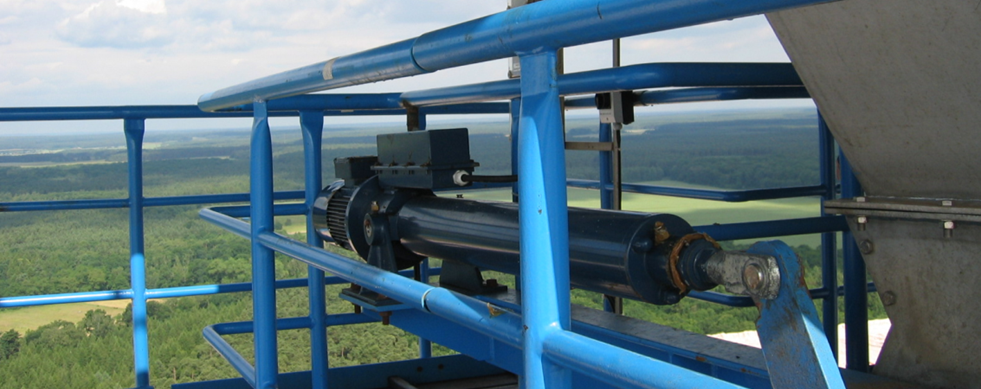Learn how RACO Electric Actuators ensure precise loading in harsh environments with innovative...
RACO Electric Actuators Used in Pantograph Applications
A pantograph is an apparatus mounted on the roof of an electric bus, tram, or train to collect power via contact with an overhead line. Another version of this can be found in a charging station where the pantograph is lowered to make contact with the EV. Actuators and cams typically provide the motion control to transfer this power effectively.
Pantograph systems have been used in public transportation for decades. These systems, primarily used in electric railways, transfer power from overhead lines to the train's electrical system. Originally, these systems relied heavily on mechanical components, which, while effective, often required regular maintenance and had limitations in terms of efficiency and reliability, and life.
Over the years, technological advancements have led to significant improvements in pantograph systems. The introduction of lighter materials, better engineering designs, and more precise control mechanisms have enhanced their performance. However, the most transformative change has come with the integration of electric actuators, which have revolutionized the way pantographs operate.
.png?width=520&height=520&name=A%20(1).png)
How Electric Actuators Revolutionize Pantograph Performance
Electric actuators have brought about a significant shift in the performance and reliability in pantograph systems. Unlike traditional mechanical systems, electric actuators offer precise control over the movement and positioning of the pantograph. This precision ensures optimal contact with overhead lines, reducing wear and tear and minimizing the risk of disconnections.
Moreover, electric actuators are capable of real-time adjustments, adapting to varying conditions such as changes in overhead line height, varying temperatures or external forces such as wind. This adaptability not only enhances the efficiency of the power transfer process but also extends the lifespan of both the pantograph and the overhead lines.
Key Benefits of Using Electric Actuators in Pantographs
The integration of electric actuators in pantograph systems offers several key benefits. First and foremost, they provide unparalleled precision and control, ensuring consistent and reliable performance. This precision reduces the likelihood of electrical arcing, which can cause significant damage and downtime.
Additionally, electric actuators are known for their durability and low maintenance requirements. Unlike mechanical systems that are prone to wear and tear, electric actuators have fewer moving parts and are designed to withstand harsh operating conditions, especially high and low extremes of ambient temperature. This translates to lower maintenance costs and increased operational uptime.
Furthermore, electric actuators contribute to the overall safety of the pantograph system. Their ability to make real-time adjustments helps prevent potential hazards, such as detachment from overhead lines, ensuring a safer and more reliable power transfer process.
Case Study: RACO Electric Actuators in Charging Pantograph Applications
RACO, a leader in electric actuator technology, has made significant strides in the application of their actuators in pantograph charging systems. One notable case study involves the use of RACO electric actuators in a public transportation network's charging infrastructure.
In this application, RACO's electric actuators were integrated into the pantograph systems used for charging electric buses. The precise control and reliability of RACO actuators ensured that the pantographs maintained optimal contact with the charging stations, resulting in efficient and consistent charging cycles. The success of this implementation highlighted the potential of electric actuators to enhance the performance and reliability of charging pantograph systems in modern transportation networks.

Future Trends and Innovations in Pantograph Actuation Technology
The future of pantograph actuation technology is poised for further innovation and advancements. One emerging trend is the integration of smart sensors and IoT technology with electric actuators. These smart systems can monitor and analyze the performance of the pantograph in real-time, providing valuable data that can be used to optimize maintenance schedules and improve overall efficiency.
Another area of innovation is the development of more energy-efficient actuators. Researchers are exploring new materials and designs that can reduce the power consumption of electric actuators without compromising their performance. This focus on energy efficiency is particularly important as the transportation industry continues to shift towards more sustainable and environmentally friendly practices.
Subscribe Here!
.png?width=1584&height=396&name=Untitled%20design%20(7).png)


